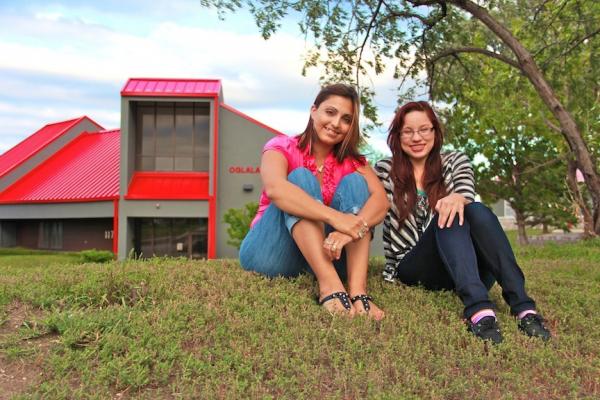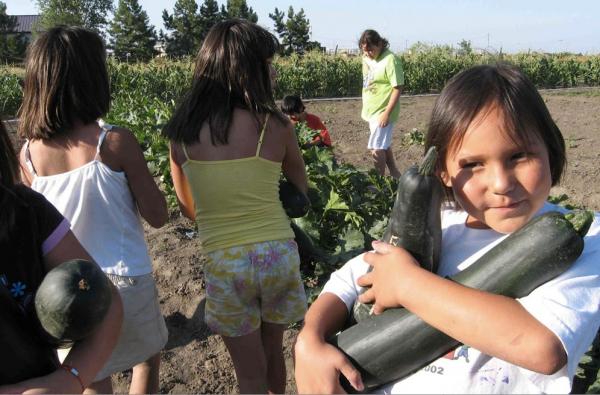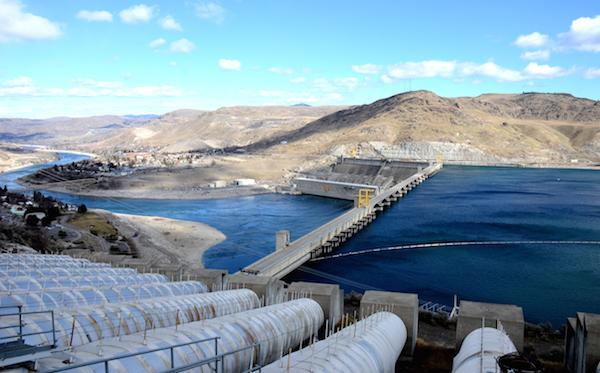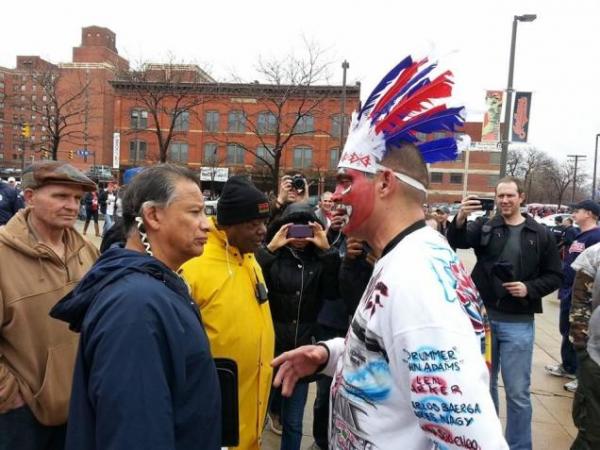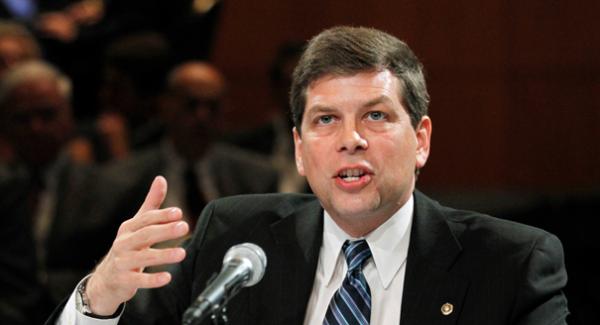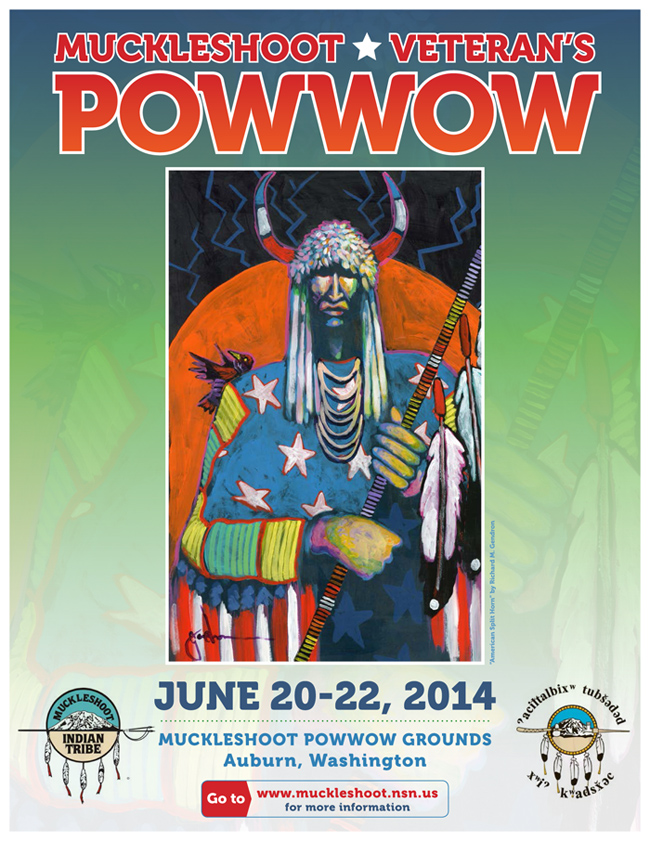Having just chaired a portion of a recent hearing of the Senate Committee on Indian Affairs, Sen. Mark Begich spoke to Indian Country Today Media Network for an interview focused on his pending Safe Families and Villages legislation, as well as the recently introduced clean Carcieri legislative fix.
Thank you for doing another interview, senator. The last time we talked, you mentioned the need for a hearing focused on strengthening the Violence Against Women Act (VAWA) to include jurisdictional provisions for Alaska Native tribes. That hearing, which you co-chaired April 2, highlighted yours and Sen. Lisa Murkowski’s (R-Alaska) Safe Families and Villages legislation, and your desire to repeal Section 910 of VAWA, which excludes Alaska Natives from the VAWA jurisdiction provisions granted by Congress last year to tribes in the lower 48 states. Please explain your desire to repeal Section 910.
RELATED: Sen. Begich Speaks Out on Indian & Alaska Native Concerns
What 910 really does is prevent the Alaska Native community from having full criminal prosecution regarding any crimes that may occur within what we consider tribal land. It also does not allow us to have equal type of law enforcement that reservation tribes do. When someone comes onto reservation land [in the lower 48 states], and they commit a crime on that land as a Native or non-Native, they can still go through a prosecution process. With us, that can’t happen. It really is a problem. We have tribal courts that exist with cooperation and agreement from the state, but they have very limited capacity.
The VAWA with the increased jurisdiction provisions for tribes in the lower 48 just passed Congress just last year with 910 in there. Why was 910 included in that legislation at all?
We attempted to try to get it out, but we did not have agreement, honestly, within our [federal] delegation on this. I’m a very strong supporter of tribal rights and tribal responsibility and self-determination. I’ve always been that way—it’s not a newfound belief since coming to the Senate. I think in a lot of ways I couldn’t get agreement. I knew if it was put in there the way it was written, Section 910, that we would see a backlash from within our Alaska Native communities. And that is what is happening. I wish we could have taken it out, but we also had the state of Alaska being totally against taking that section out of there. They wanted that section. I know they lobbied members of the [Senate Committee on Indian Affairs] when the bill was being reviewed, and they were able to prevail on the idea that 910 was needed so as not to interfere with states’ rights. I wasn’t on the committee at that time. If I was on the committee at that time, I would have done everything I could to prevent that section from being added in there.
Is Sen. Murkowski, part of your Alaska delegation, on board with getting rid of 910?
Yes. She’s agreed to that. We had a lot of discussion after the bill passed. She felt the conversation from the Alaska Native community really moved her to accept this as an important piece.
How about Rep. Don Young (R-Alaska) on the House side—has he weighed in on the idea of repealing 910?
He has not to me. That does not mean that his staff and my staff aren’t talking. But I haven’t heard a problem here yet.
Beyond repealing 910, it’s clear that Alaska Native tribal advocates want amendments added to your bill that would increase and enhance Alaska Native tribal jurisdiction over non-tribal offenders. You were supportive during the hearing of adding those kinds of amendments, but is that going to be easy?
It’s not going to be easy, but I will tell you, the Alaska Federation of Natives and a group called the Tanana Chiefs Conference have created a tribal law project that encourages jurisdiction for tribes to implement tribal law and order issues. We know that non-tribal member perpetrators are a problem for tribes in Alaska, yet tribes have no jurisdiction. I’m not sure how far we will get with this. The good news is there are more folks getting aware of this issue. Sen. [Heidi] Heitkamp [D-N.D.], as you heard during the hearing, was not aware, really, of what was going on in Alaska on these issues. And now she is willing to work with us in any way she can to make our legislation have the same impact as the increased tribal jurisdiction in the lower 48.
Tribal judge Natasha Singh testified in favor of a tribal law project-inspired amendment at the hearing. What are the political realities in your state of getting that project implemented?
This would deal with curbing child abuse, neglect, domestic violence, and other issues among tribal members and non-members, yet the state is not supporting it at this point. In order to make it work, I want to put it inside the Safe Families and Villages Act, so we have more tools to fight these incredibly big problems. The politics of it—the state will more than likely oppose it. But I hope they are supportive of the people of Alaska.
Is there tribal consensus in your state that this tribal law project amendment is the way to go?
Yes. There is no question. We have received enormous support from individual tribes, groups, the Alaska Federation of Natives—everywhere across the state.
Your legislation currently encourages the state to enter into intergovernmental agreements with tribes related to the enforcement of certain state laws by the tribes. You made it clear at the hearing that this provision isn’t enough. But why not? Why wouldn’t that be a good start, and then you try to do more later on?
Here’s the challenge. Years ago, when the Tribal Law and Order Act passed, I sat with state of Alaska officials, the federal delegation, and others, and I said back then that I wanted these better provisions for Alaska Natives. And they said, ‘Oh no, let’s pass the Tribal Law and Order Act, and it will all get resolved.’ Now here we are several years later with the same story, the same talk, and no results. My view is that the state would like the Alaska Native people to be subservient to them. That is not acceptable when we have outrageous crime statistics facing Alaska Native communities.
Are there a lot of Congress members who would take a stand against allowing tribes in Alaska to be treated the same as tribes in the lower 48 on these matters?
I don’t think so, but you never know. On this one, I think we can make the case.
If state officials don’t agree with repealing 910 and adding the other amendments, is that really going to make this bill tougher to pass?
It may be tougher, but I feel confident that at the end of the day we can prevail. The state’s current administration does not recognize tribes. I think that is apparent to a lot of senators, and as I lay that out more, I think they will be shocked. It’s the same administration that wanted to strip away voting protection rights for our tribes and the same administration that has battled against tribal subsistence. They just don’t support tribes.
I have to ask you about Carcieri again and the controversial 2009 Supreme Court decision that affected the Department of the Interior’s ability to place lands into trust for tribes. Since we last talked, you have cosponsored a clean Carcieri legislative fix that would recognize Interior’s ability to take lands into trust for all tribes, no matter when they came under federal jurisdiction. Give opposition to a clean fix by some Democrats including Sen. Dianne Feinstein (D-Calif.), it seems clear that Republican support is going to be needed for it to pass. How likely is that?
Any time you can get a bipartisan bill, it’s a good thing. This is a complex issue. It needs to be a clean fix. I think if we can get some Republicans, it would be very positive. We need to resolve this and get it settled. For us to continue to leave this lingering, it is harming tribes throughout the country. I know Sen. Tester is going to work it to see what he can get.
Have you been surprised that Sen. John Barrasso (R-Wyoming), vice-chair of the Senate Committee on Indian Affairs, has been rather quiet on Carcieri?
It’s a little bit surprising, but I do think that now that the bill is out there, he knows that this is coming to a hearing, so he’s going to have commentary on it. That will help create the discussion we need. I think he has to figure out if there are other Republicans who will support this if he does. I don’t know what his thinking is, but as the vice-chair, I would expect him to have some commentary on it.
Do you work with Sen. Barrasso on various issues?
I do. I have worked with him on issues surrounding oil and gas. We just had a bill that I sponsored with him.
So you will be encouraging him to support a clean Carcieri fix?
Oh yes.
Finally, how did it feel to have that gavel in our hand when you co-chaired the recent hearing?
(laughs) It’s always a good feeling when you can manage the conversation on issues that you care a great deal about.
This interview has been edited and condensed for clarity.
Read more at http://indiancountrytodaymedianetwork.com/2014/04/07/sen-begich-presses-vawa-protections-alaska-natives-154345?page=0%2C3
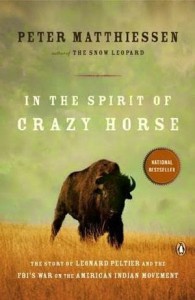 However, it is his non-fiction books that I value the most. These include In the Spirit of Crazy Horse, which chronicles the story of Native Indian political activist Leonard Peltier and the FBI and US Government’s war on the American Indian Movement and his book about the legendary farm worker, union organizer and activist Ceser Chavez.
However, it is his non-fiction books that I value the most. These include In the Spirit of Crazy Horse, which chronicles the story of Native Indian political activist Leonard Peltier and the FBI and US Government’s war on the American Indian Movement and his book about the legendary farm worker, union organizer and activist Ceser Chavez.

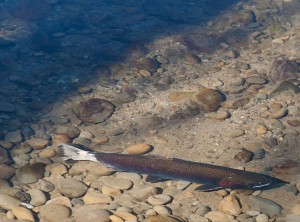 Apr 7th, 2014
Apr 7th, 2014
